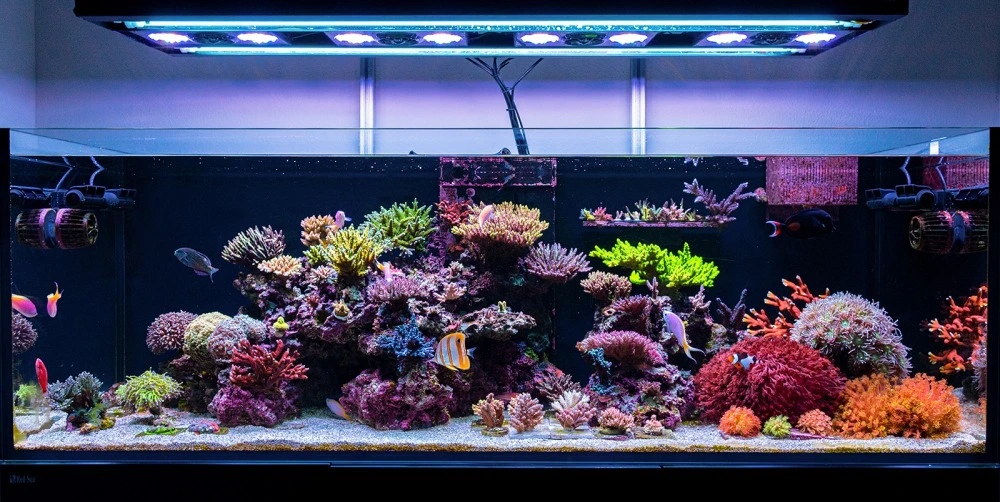Stunning 200-Gallon Reef Tank – pokerdobe's TOTM | NanoReef

Tank Specifications
Volume: 200 Gallons / 757 Liters
Dimensions (L × W × H):
71.0" ×
25.6" ×
23.6"
180.3cm ×
65.0cm ×
59.7cm
Equipment List
No equipment information available
Frequently Asked Questions
How often should I feed the fish in a reef tank?
It’s recommended to feed your fish multiple times a day. In my setup, I feed a variety of mixed foods several times a day. This includes LRS Reef Frenzy, PE Mysis, and other high-quality pellets and frozen options. Consistent feeding helps maintain fish health and encourages natural behavior.
What is the recommended water change routine for a reef tank?
I perform a 20% water change weekly, splitting it into two days at 10% each day. This helps to maintain water quality and removes detritus effectively.
What testing is required for a reef aquarium?
Weekly testing is crucial, focusing primarily on Alkalinity, Calcium, and Magnesium. Salifert test kits are preferred for quick readings. Make sure to establish a consistent testing routine to catch any fluctuations early.
How can I ensure my glass stays clear and clean?
Daily, I scrape the glass to remove algae and debris. This helps maintain good light penetration and overall aesthetics. Additionally, use a reliable algae scraper appropriate for your tank material.
What is the purpose of using a Top Off system in a reef tank?
A Top Off (ATO) system helps maintain stable salinity levels by automatically adding freshwater as evaporation occurs. This is vital to ensure a consistent environment for your corals and fish.
What foods are best for feeding fish in a reef tank?
A variety of mixed foods is ideal. I use LRS Reef Frenzy, PE Mysis, and both pellets and frozen foods such as Hikari brine and bloodworms. This diverse diet closely mimics their natural feeding habits.
How do I properly dose 2-part solutions in a reef tank?
I dose ESV B-ionic Alkalinity and Calcium 12 times daily via a controller, which provides consistent delivery. Magnesium is dosed monthly according to test results. It's crucial to adjust doses based on your tank's consumption.
Should I spot feed corals in my reef tank?
While spot feeding can be advantageous for some corals, I prefer broadcast feeding, where food is dispersed throughout the tank without reducing pump flow. This allows corals to feed naturally and is less labor-intensive.
What type of filtration is recommended for a reef tank?
A mixture of mechanical and biological filtration is best. My system primarily uses live rock and one media reactor with RedSea carbon to ensure clean water. Mechanical filters can remove particulates, while live rock supports beneficial bacteria.
Why is circulation important in a reef aquarium, and how should it be managed?
Flow is crucial as it helps remove waste, supports gas exchange, and brings food to corals. I use multiple powerheads strategically placed to create randomized flow patterns to mimic natural reef conditions.
What lighting setup is recommended for a reef tank, especially SPS corals?
For SPS dominant tanks, a hybrid lighting setup like mine with Ecotech Radion LEDs paired with T5 bulbs works well. Proper coverage and intensity are key; avoid focusing solely on intensity.
What should I do if I experience an algae outbreak in my reef tank?
Control nutrient levels by testing nitrates and phosphates. Regular water changes, reducing feeding, and using a quality skimmer can help. Manual removal of algae and boosting flow can also mitigate the problem.
How do I deal with pests or unwanted organisms in my reef tank?
Quarantine new corals and perform a 1:1 Bayer dip on all new additions before introducing them to your display tank. Regular inspection of corals and keeping the system clean will limit pest outbreaks.